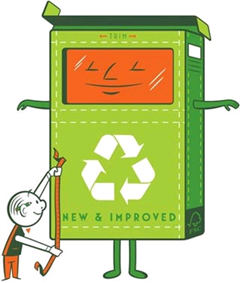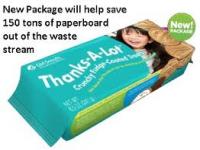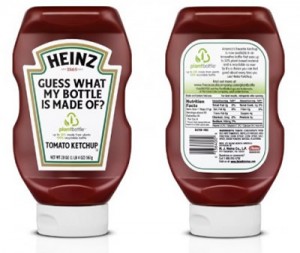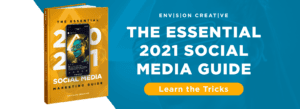Everyone has been talking about going green lately, whether it’s for your home, your car, cleaning products, or anything else… and it looks like it’s not just a passing fad. The trend actually began at the beginning of the industrial revolution but started picking up solid traction in the main stream in the late nineties and has been the marketing buzz term of the past decade. Green packaging is the newest element of this surge of environmental concern.
Why choose greener packaging?
 Increased Environmental Awareness – The public has become more and more aware of the environmental and health impacts of packaging and transportation and is reacting by purchasing products that have made efforts to provide safer products.
Increased Environmental Awareness – The public has become more and more aware of the environmental and health impacts of packaging and transportation and is reacting by purchasing products that have made efforts to provide safer products.- PR/Community – If given an opportunity to get out in front of your community, you should take it. Right now, any efforts to become more environmentally friendly are news worthy and can help you build a loyal customer base.
- Cost Savings – If reducing the amount of packaging is in your plans for going green then there could be manufacturing savings as well as shipping and transportation savings.
What makes a package green?
Everything from the type of materials being used to the amount of packaging materials, the shape of the actual package, or the process in which the materials are created can determine the level of “green”. Weight and mode of transportation also play a big role in the green factor and all of these elements can help save the planet, and maybe a little money at the same time.
Who’s going green, and how?
It seems that everyone is making an effort to green up their packaging in some regard from Heinz and Frito Lay to the more expected natural foods like Naked Juice and Stonyfield Farm, efforts are being made to green up the brands in any way possible.
 Girl Scout Cookies
Girl Scout Cookies
For the first time ever, Girl Scout Cookies will be removing the paperboard packaging and utilizing film-overwrapped trays, reducing the use of 150 tons of paperboard. That is enough to fill 14 garbage trucks. The new packaging will also be printed with water-based inks. “Water-based inks and adhesives contain less than 5 percent volatile organic compounds, compared to solvent-based inks and adhesives that can contain 45-65 percent VOCs,” says Millie Nuno, director of marketing for Eagle Flexible Packaging in Batavia, Ill..
Heinz Classico Pasta Sauce
Standard glass jars weigh 17.5 oz. Heinz’s greener jar, weighs 16.3 oz., and delivers a 7.2 percent weight savings. The lighter weight yields more efficient shipping and a reduced carbon footprint.
Naked Juice
Naked Juice Company recently announced that it would start filling it’s juice and juice smoothies into the reNEWabottle, which is made from 100 percent post-consumer recycled polyethylene terephthalate (rPET). Previously, the brand used high-density polyethylene (HDPE) bottles for its products. According to the company, switching to rPET bottles will reduce Naked Juice’s virgin plastic consumption by 7.4 million lbs. per year, save more than 12,000 cubic meters of space in landfills and reduce the company’s packaging-related greenhouse gas (GHG) emissions by 35 percent.
What about cost?
In the past, making environmentally friendly packaging meant increased costs, which meant a more expensive product on the shelves. That no longer has to be the case. There are many factors at play that allow for the efforts to make your product more green and result in reasonable prices.
 Increased Demand – As the demand for green packaging increases, more suppliers jump on the bandwagon to provide sensible options.
Increased Demand – As the demand for green packaging increases, more suppliers jump on the bandwagon to provide sensible options.
Innovation – Since large brands like Heinz, Coke, Wal-Mart, etc. have gotten into the mix, they have invested in finding the most cost-effective ways to make their products and partners use less energy and raw materials, utilize renewable materials, and reduce emissions in production and shipping. Their investment in the R&D eventually becomes common practice and everyone benefits from the results.
Increased Recycling – The percentage of consumer recycling has steadily increased over the years. Increasing from 8% in 1990 to over 30% in 2000 and much more now. As more post-consumer products become available, the price decreases.
I can’t think of a reason not to make efforts to utilize green packaging, unless having your trouble finding cost effective ways to do so. Depending on what part of the world you’re in, resources may not be as readily available.
What are your thoughts, concerns, or questions about green packaging?
-FINAL(01-00)-White&Blue-01.svg)




